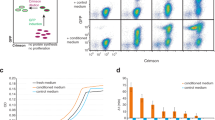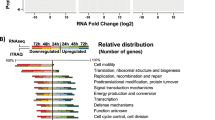Abstract
Landman and Halle1 showed that lysozyme or penicillin in suitable circumstances could cause mass conversion of vegetative cells of Bacillus subtilis strain 168 (indole−) to L-forms. These L-forms could be sub-cultured on so-called “S.D.” medium which contains glucose salts, horse serum, sodium succinate and tryptophan, with 0.9 per cent agar. Prolonged incubation (5–10 days) on the normal medium (S.D.) or short incubation (48 h) on media with an increased concentration of agar led to equally massive reversion of the L-forms back to bacteria. Later2 the conversion to L-forms of both B. subtilis and B. licheniformis was shown to be accompanied by the extrusion of mesosomes. The authors comment that “Our data on the stimulation of reversion by physical agents have suggested … that membrane invagination may be the primary event”.
This is a preview of subscription content, access via your institution
Access options
Subscribe to this journal
Receive 51 print issues and online access
$199.00 per year
only $3.90 per issue
Buy this article
- Purchase on Springer Link
- Instant access to full article PDF
Prices may be subject to local taxes which are calculated during checkout
Similar content being viewed by others
References
Landman, O. E., and Halle, S., J. Mol. Biol., 7, 721 (1963).
Ryter, A., and Landman, O. E., J. Bacteriol., 88, 457 (1964).
Author information
Authors and Affiliations
Rights and permissions
About this article
Cite this article
FODOR, M., ROGERS, H. Antagonism between Vegetative Cells and L-Forms of Bacillus licheniformis Strain 6346. Nature 211, 658–659 (1966). https://doi.org/10.1038/211658a0
Issue Date:
DOI: https://doi.org/10.1038/211658a0
This article is cited by
-
Nuclear DNA changes, genome differentiation and evolution inNicotiana (Solanaceae)
Plant Systematics and Evolution (1987)
-
Changes in DNA composition in the evolution of Vicia species
Theoretical and Applied Genetics (1984)
-
Nuclear DNA variation in Lathyrus
Chromosoma (1976)
Comments
By submitting a comment you agree to abide by our Terms and Community Guidelines. If you find something abusive or that does not comply with our terms or guidelines please flag it as inappropriate.



